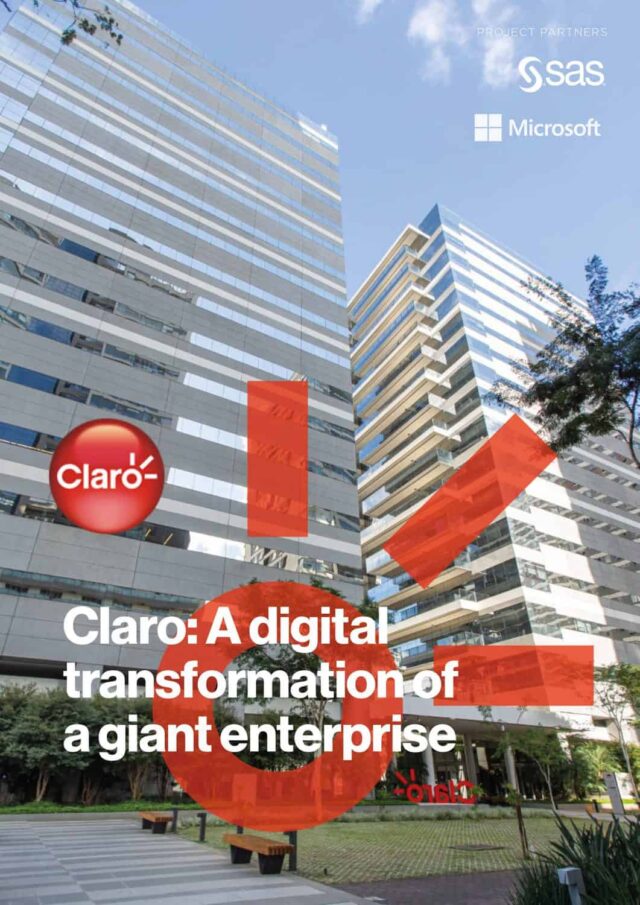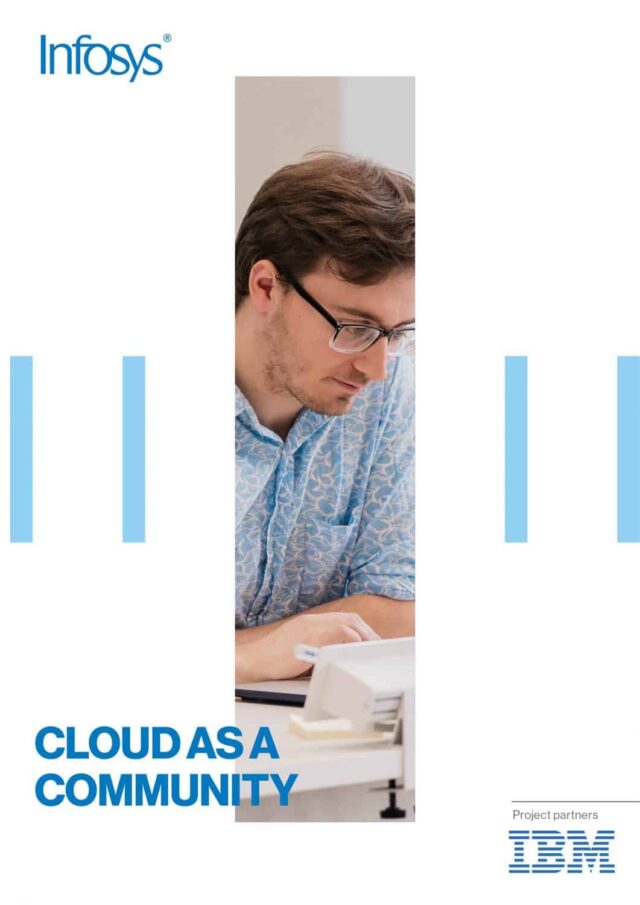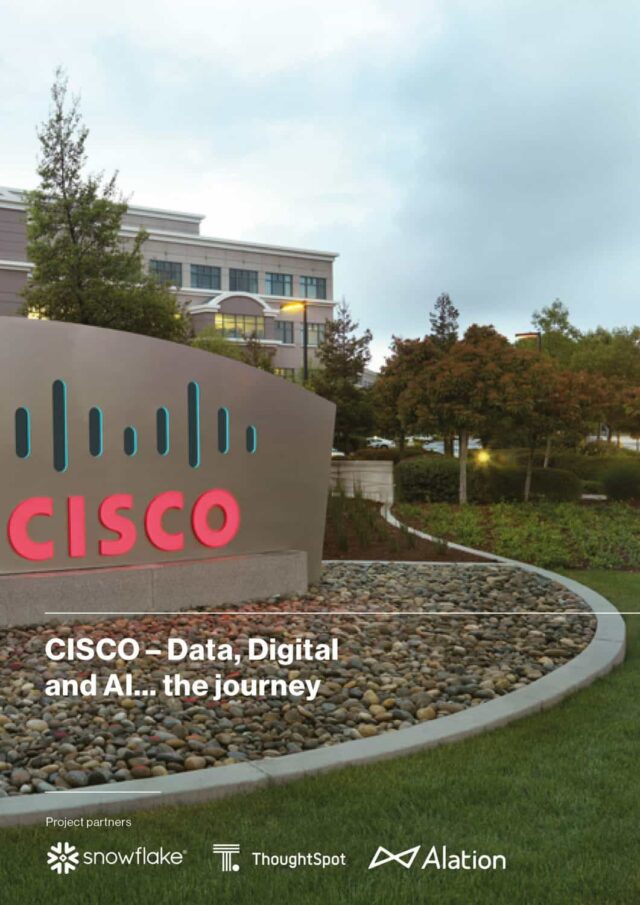
2020 will forever be remembered as the year that COVID-19 triggered a dramatic halt to life as we knew it, as billions of people were ushered into a world of isolation, economic disruption and total uncertainty. But behind the scenes, as the scientific community battled away to find a vaccine, there were many more working above and beyond to keep communities informed, healthy and safe.
Lori Snyder is the CIO, Information Systems & Technology at the State of Nebraska for the Department of Health and Human Services (DHHS), the lead agency in the state on COVID response, which has five divisions: Behavioral Health, Children and Family Services, Developmental Disabilities, Medicaid Long-Term Care and Public Health. And three months into her new role at the DHHS, slap bang in the eye of the COVID storm, Snyder is clearly up for the scale of the challenge in front of her. “I’m a pretty quick study, so I’ve jumped into a lot of things,” she says. “And I think that the state and the federal government have done a really good job in terms of putting together solutions so quickly with no notice, but at the same time, when you get a few months in, you can see opportunities to improve and make things better. For example, we have seen places where the software and the solutions we’ve put in place for the COVID response really helped with the testing, getting test results back and notifying people.”
Snyder has previously worked in healthcare, manufacturing, mail services, insurance, government, and with the military, but has never really specialized in a particular industry. “I really like to learn, and I get bored if I’m not learning,” she explains. “So, I try to keep that learning curve going. I was getting to the point in my career where I wanted to help other people in some sort of service role. I needed to be in a leadership role where I could have a big impact. And so, with the COVID crisis going on right now, it really gave me an opportunity to pitch in and find a place where I can really help, not only typically where you would assist a company in moving forward, but in terms of helping save lives.”
One of the key COVID challenges that Snyder and the State of Nebraska had to face was communication and the development of new ways to expand that area in order to give better service as the logistics of rolling out new vaccines dovetailed with track and trace. “We’re looking at places where we can communicate with people in a way they desire,” she explains. “Which is such a normal thing in the E-commerce world, but we didn’t have time to build this into track and trace. So, we’re finding ways to do things online, through texting, and email, where before it was a call – now a contact tracer will reach out and get the information from the individual. We’re now looking at places where we can track symptoms and use that tracking to help people know when to go into work, or to help them provide a letter to their employer for tax credits through the Cares Act.”
Although vaccines are being rolled out across the globe, there are many logistical challenges inherent in such a campaign, with transport and storage being two notable concerns. “We’re looking at not only getting the vaccine from the manufacturer, but also to the places providing the vaccine,” Snyder says. “And in this case, it’s critical because we’re using ultra-cold storage. So, you can’t give it to every provider who would normally receive a vaccine.
You have to select those who have that ultra-cold storage. And then, how are we going to help the people within the State of Nebraska to get that vaccine? So, the hospitals help identify the people who are in that first group (healthworkers), right? But as you get deeper into the population, it’s not as clear who is going to alert people when they’re next. Who’s going to encourage them to sign up? Who’s going to help them remember which kind of drug they had, since there are multiple doses? If they had Pfizer first, they then need the Pfizer second dose. If they had Moderna at first, they need the Moderna second dose. Who’s looking at systems to track and curb the adverse reactions? Now, a lot of these systems are in place, but we’re going to extend the capabilities in some way because maybe some of this work was done by a provider in the clinic previously, and now we need to reach a wider population. Sometimes you have people who don’t have a regular provider, as maybe they’ve moved, or maybe they just don’t go to the doctor that often. And so, they may need help finding out where to go to get the vaccine. So, there’s all these extra things around the edges that get us looking to either take the systems we have in place and extend them, or looking to add some extra components, such as the Microsoft Vaccine solution.”

Contact tracing relies on exposure notifications that identify people who were exposed, beyond just word of mouth. “It’s one of those problems where you start reaching out to community leaders, or chambers of commerce, or provider groups or whatever, that identifies even more needs. And so, we’re really trying to put that together in a holistic picture. I just gave a presentation to the governor of the State of Nebraska, to put the picture together, showing the life cycle of a person and all the things that they might need for support mechanisms for COVID and vaccinations. I think it’s been very helpful to take that strategic holistic approach, and look at the solutions we have, making sure they integrate well together, ensuring that the data communicates well together to improve the service we’re providing to the folks who live in the State of Nebraska.”
The context and background to this work is stark. The clock is well and truly ticking, as Snyder, her colleagues and her peers try to gain an upper hand during this pandemic while people continue to fall sick. The key to control is the spirit of partnership and collaboration. “I’ve met with 48 different people or companies, from other state leaders, to vendors, to providers, to staff members and external parties who are trying to solve this problem,” she reveals. “It’s really jump-starting things for me and enabling me to put that whole picture together for my leadership team, so that we can make good decisions about what we do to support the people in the state. Some of the things we were doing anyway but were not related to COVID. We are now looking at how we can best serve the State of Nebraska and the folks here better.”
The I Serve Nebraska Portal is a new data warehouse built upon the concept of serving Nebraskans better with improved access, user experience and data around Economic Assistance and Medicaid. “We were looking at how we could provide smaller solutions using low-code and no-code types of solutions, like Microsoft Dynamics 365, or the Microsoft Power Apps,” says Snyder. “We were doing that anyway, but what this pandemic has done is accelerate how we need to get those things going faster or where we can leverage some of those technologies or some of those small pieces of the puzzle toward solutions for the pandemic, while still realizing we have these bigger projects that will continue progressing, and that will still come to the table within their own timeframes.”
“Government sites often have these little rectangles on their websites and I call it ‘pick-a-box,’” she explains. “And people try to figure out where to go to get the benefits they need. And so, they might select a box and it takes them down a path and ‘no, that’s not it.’ And they come back to the top and they eventually figure it out. The next time they come back, they can’t remember that and so they go through the same pick-a-box, right? What we are trying to do with this new portal is make this intuitive and easy for those first-time users, as they’re probably already feeling like they don’t want to reach out for help. We want to make this easy for them so we’re not compounding that struggle. Now we have multiple applications and if you maybe qualify for two or three benefits, you have to go through that process two or three times. We want to drive the questioning in the application with better design and artificial intelligence so that people can answer the questions just once. We can now help them identify what benefits they qualify for by merging those applications into one. Plus, how can we pre-fill information for them? None of these things are rocket science in the E-commerce world, but you don’t always see it in the government world.”
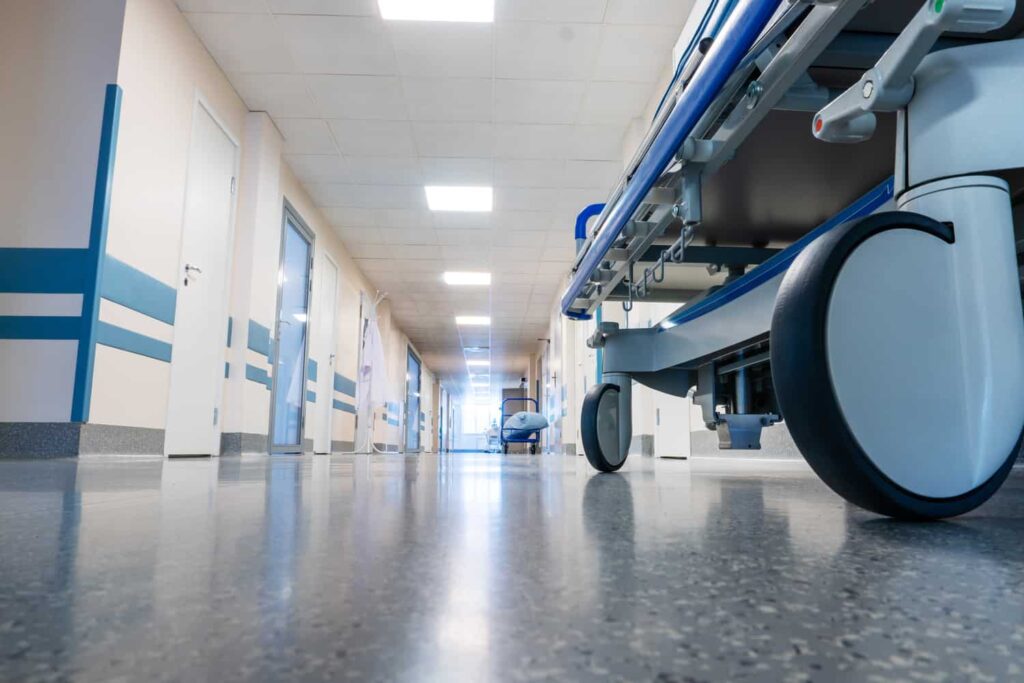
Snyder is visibly moved by the spirit and commitment shown by vendors during these challenging times as they join forces to develop highly anticipated solutions. “Vendors are really thinking about the problems as thoroughly as they possibly can,” she enthuses. “When I look at demos, let’s say on vaccine management or something like that, and you start thinking about all the different scenarios, these solutions are coming to the table really well thought-out. People are investing thought time where maybe it wouldn’t have been invested quite so dramatically, and quite so quickly, before. I think there’s a personal nature to this because it matters to people’s lives.”
“I was talking to folks from Apple and Google yesterday and thanking them for what they are doing with exposure notification, because I know that they are diverting other work in order to do this. And at least Google and Apple in the U.S. are offering some free technical capabilities for states, governments and cities to use. Well, that kind of thing doesn’t always happen, right? People are taking this so personally they’re doing it on their personal time, too. They’re investing really deep thinking and thought and work and development time in this, which is testament to the good in people and the good that we see coming out which wouldn’t usually be visible. I really believe in win-win vendor partnerships.”
According to Snyder, Microsoft has been super supportive in terms of understanding technologies and finding faster ways to go to market, things they can do to speed the processes up “while still giving a really high-quality solution, allowing us to bring other vendors to the table to do the implementations”. Snyder’s department has a small legislator app going live in just four weeks. “Which is kind of unheard of,” she laughs. “That’s the beginning of the contract to the deliverable, so that’s a pretty fast cycle, especially in state government. Microsoft was very instrumental in bringing the vendor to the table, getting the licensing done, making sure we understood how to get through all the technical steps so we could launch. This will be a cloud launch with a very small app, but start to finish, exactly what we need to track our legislative bills.” A second app going live is the legislative bill tracking, to allow constituents to send questions to provide visibility on who has been contacted for answers and making sure the answers get back to the right people.
Snyder and her team have also been working with Cordova Solutions and Microsoft, plus collaborative work with Snowflake regarding how they’re going to move data to the Cloud while making public health data available so “that we can do better work in the COVID space and ultimately the broader public health and Medicaid areas”. Snowflake has been really instrumental in looking at workflows, helping to identify gaps, providing ideas and solutions, and then ultimately providing vendors who can implement. There have also been fruitful working relationships with Qualtrics and the Salesforce team in implementing some of its COVID solutions.
Teamwork and partnerships during COVID have obviously worked across state lines too, as people cross state borders, potentially transporting this disease. “Our solutions work better if your neighboring states are working alongside you. We have people in our state crossing borders every day, maybe going to jobs, school or visiting relatives who live across these state borders,” Snyder explains. “If we deploy some of these solutions in a way that you can still get the information flowing across the border, we are going to have a better solution for the people in our state. So, a lot of good can come out of this. I think sometimes people are afraid of that collaborative notion and sometimes people want to develop things on their own, but I’m really about accomplishing results and that means leveraging others in a positive way and allowing them to leverage my knowledge as well and having us all work together to identify better solutions more quickly. Learning from someone else is on one hand freeing, but more importantly, it gets us to solutions faster.”
Snyder is working hard to bring her private experience, as well as that of her vendors, to the table to help drive things in a direction that makes it a lot easier for her clients to interact, thus freeing the DHHS staff so they can really spend more of their time with clients. An example is the new portal, iServe, which is currently being deployed. iServe is a smart app that asks learning questions to make it easy for clients to apply for benefits without answering extra questions. “Instead, they can spend their time getting to know them, understanding their needs, maybe helping them qualify for more benefits than they’re aware of, but really making good decisions to help them get the help they need. This really is something that’s helping people maintain their dignity, and to get them on their feet if they’re facing some initial or one-time adversity. Or they might have something long-term or ongoing.
We’re making it efficient for them so they can spend their time taking care of whoever it is they’re taking care of whether that’s themselves or a loved one and not spending their time on a computer trying to figure out how to get the benefits that they need. The Snowflake data warehouse for example is a chance to pull the data together so the state can use it for people’s good. Not only can we use that to provide benefits better, but we’re going to be able to use it to find ways to produce those benefits more cost-effectively so we can use that money more wisely for the people of the State of Nebraska. We’re also going to be able to use it in the public health area to help drive better health for the State of Nebraska folks, because if we can find trends or better ways to serve them, so they get the health information they need, maybe we prevent some diseases beyond preventing COVID. It further supports our mission of helping people live better lives.”
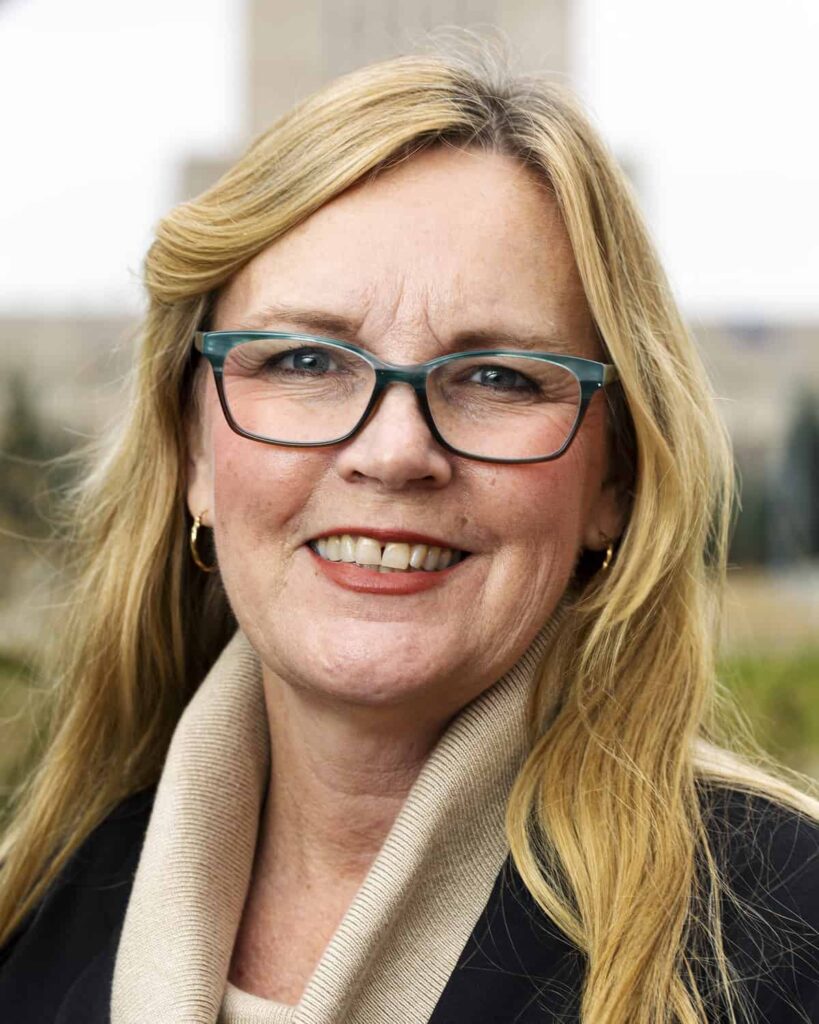
Anytime Snyder looks at an IT project, she centers in on the human element. “It’s that emotional connection that helps people understand what you’re trying to do so that the people working on that feel that sense of urgency? When they feel that sense of urgency and they feel that sense of connection, they go that extra mile so the people using these processes and tools feel better about their jobs and lives. It creates this circle of goodness.”
“All of this is about getting people everything they need. And making sure they feel dignity in doing this. Everything we do comes from this really caring spot. And I love that. It makes you feel that people really are in this to serve the people of Nebraska. They’re really in it because they care. And this is meaningful to me. I want to spend my life and my time giving back.”






